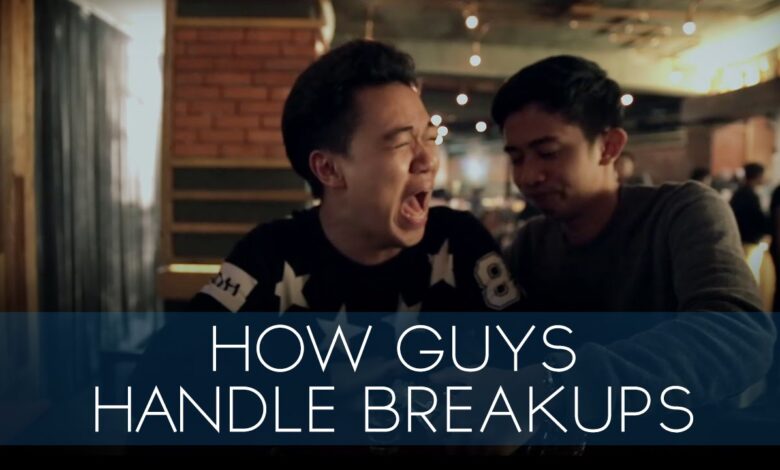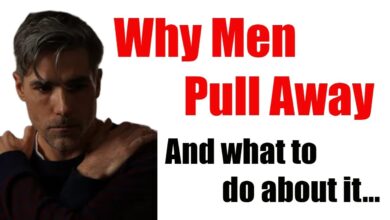
Introduction: Why Breakups Cut in Different Ways
A breakup is never just an event—it’s an emotional earthquake. The silence after the final goodbye, the empty chair at dinner, the sudden absence of texts—these small voids remind us of love lost. Yet while human beings eel heartbreak deeply, the way they handle it often looks worlds apart.
Men may appear composed, stoic, even unfazed. Women, on the other hand, might openly express tears, seek support, and process grief immediately. But appearances deceive. Beneath the surface, All genders take very different emotional journeys when dealing with the end of love.
This is not about who suffers more—it’s about understanding the unique coping styles shaped by biology, culture, and psychology.
The Shockwave of a Breakup: First Reactions
The first hours and days after a breakup reveal the sharpest contrasts.
- Women often allow themselves to cry, vent, and talk through their emotions. It’s an immediate release.
- Men, however, may push feelings aside. They put on a mask of “strength,” telling themselves and others that they’re fine.
This isn’t because men don’t feel pain. It’s because they are taught—consciously or unconsciously—that showing heartbreak is weakness.
👉 The irony? By holding back, men often prolong their pain instead of reducing it.
Why Men Hide Their Heartbreak
Men are not naturally unemotional; they are conditioned to be so.
From childhood, many boys hear:
- “Be a man.”
- “Don’t cry.”
- “Toughen up.”
These cultural scripts teach men to treat vulnerability as a flaw. So when breakups strike, instead of leaning on support systems, men often retreat inward. They distract themselves with work, fitness, drinking, or casual dating.
But research shows that suppressing emotions can delay healing, while open expression accelerates it (Psychology Today).
The Timeline of Grief: Early vs. Delayed Pain
Perhaps the starkest difference lies in timing.
- Women’s pain often peaks immediately. They process grief through tears, conversations, and emotional release. Painful, yes—but cathartic.
- Men often experience delayed pain. At first, they may feel relief, freedom, or even excitement. But weeks later, when distractions fade, loneliness hits like a second breakup.
This lag explains why women are often seen moving forward while men suddenly unravel later.
Coping Mechanisms: Escapes vs. Expression
Men’s Common Strategies
- Distraction: Work, gaming, fitness, or travel.
- Rebounds: Seeking validation through casual flings or new partners.
- Substances: Drinking or partying to avoid quiet moments.
- Silence: Withdrawing from friends or family.
Women’s Common Strategies
- Support systems: Talking with friends, family, or therapists.
- Reflection: Journaling, self-help, or spiritual practices.
- Emotional expression: Crying, venting, or leaning on rituals of release.
- Growth-oriented actions: Reading, classes, or self-care routines.
👉 Men cope by escaping. Women cope by expressing. Both paths can lead to healing—but expression often shortens the journey.
Table: Men vs. Women in Breakup Coping
| Aspect | Men | Women |
|---|---|---|
| Immediate Response | Mask pain, act fine, distract themselves | Cry, talk, lean on support |
| Grieving Timeline | Delayed, loneliness hits later | Immediate pain, but faster recovery |
| Coping Style | Avoidance, rebound, silence | Reflection, emotional release, social support |
| Risks | Substance abuse, reckless behaviors | Overthinking, emotional burnout |
| Long-Term Impact | Lingering sadness, unresolved wounds | Greater self-awareness, emotional growth |
The Role of Ego in Breakups
For many men, breakups strike directly at the ego.
- Rejection feels like a challenge to masculinity.
- Losing a partner feels like losing identity.
- Many men respond not with vulnerability but with defensiveness.
Instead of admitting, “I’m hurt,” ego says, “She didn’t deserve me anyway.” Instead of grieving openly, ego pushes men into rebounds, overwork, or emotional distance.
But this ego shield only delays healing. Vulnerability, not pride, is the true path to recovery.
Why Social Circles Make a Difference
Support systems shape recovery speed.
- Women’s friends are often ready with tissues, advice, and listening ears. They validate emotions and encourage expression.
- Men’s friends, however, may avoid the topic, make jokes, or distract with nights out. Rarely do men sit down with friends and confess heartbreak.
This difference in social support means women feel seen and heard, while men often face loneliness even in crowded rooms.
Rebound Relationships: A Common Escape
Rebound relationships are more common among men after a breakup.
- They provide distraction and temporary validation.
- They soothe ego wounds by proving “I can still attract someone.”
- But rebounds often collapse quickly, reopening old wounds.
Women are less likely to rebound immediately, and when they do, it’s often with more reflection, making their rebounds less destabilizing.
Long-Term Effects: Who Really Moves On Faster?
It’s often said that women cry more but heal faster, while men cry less but hurt longer. Research supports this pattern (BBC Future).
- Women often emerge stronger, with deeper self-awareness.
- Men may carry unresolved grief that resurfaces in future relationships.
This doesn’t mean men don’t move on—it means they often carry invisible scars that take longer to fade.
Signs a Man Is Still Hurting
Men don’t always cry in public, post sad quotes online, or talk endlessly about heartbreak. On the surface, many seem to “move on” quickly. They dive into work, new hobbies, or even new relationships, often projecting strength. But beneath the mask, emotional pain lingers. A man may be hurting silently, carrying wounds that only show up through his behavior.
Let’s look at the subtle and not-so-subtle signs that reveal when a man is still grieving love lost.
1. Overworking and Busyness as Distraction
One common sign is when a man throws himself completely into work, gym routines, or endless projects.
- Long hours at the office, beyond what’s required.
- An obsessive fitness schedule that leaves little downtime.
- Taking on new commitments to avoid quiet moments.
This isn’t productivity—it’s escape. The silence after a breakup can be unbearable, so busyness becomes a shield against painful thoughts.
2. Increased Drinking or Partying
Some men cope with heartbreak by numbing emotions through alcohol, late-night parties, or casual hookups.
- Nights out become more frequent.
- Drinking turns from social fun into a crutch.
- Reckless choices replace self-care.
These behaviors signal not healing but hiding. When alcohol or constant distraction becomes the solution, the pain is still unresolved.
3. Jumping From Relationship to Relationship
Rebound dating is another major sign. While starting fresh can sometimes help, rushing from partner to partner usually means he’s still carrying old wounds.
- He moves into a new relationship within weeks.
- He talks more about his ex than his current partner.
- His new relationships lack depth and end quickly.
Instead of processing emotions, rebounds provide temporary validation—an ego boost rather than true healing.
4. Withdrawal From Friends and Family
Not all men act out after heartbreak. Some go the opposite way—pulling back from social connections.
- Canceling hangouts with friends.
- Ignoring calls or messages.
- Spending more time alone without explanation.
This isolation often masks sadness or shame. Men may avoid others because they don’t want to appear vulnerable or face questions about their breakup.
5. Anger and Irritability
Pain sometimes wears the mask of anger. When a man is hurting, even small frustrations can trigger big reactions.
- He snaps at friends or colleagues.
- He’s impatient in daily life.
- He seems constantly on edge.
This irritability is often misplaced grief. Instead of crying, men may lash out—anger feels safer than admitting sadness.
6. Holding Onto Memories of the Ex
Lingering attachments are clear indicators of unresolved pain.
- He keeps old photos or messages and revisits them often.
- He brings up his ex in conversations.
- He compares new partners to his past relationship.
This shows that emotionally, he’s still tethered to what was lost. His heart hasn’t let go, even if his words say otherwise.
7. Social Media Behavior
Digital footprints often expose hidden emotions.
- Liking or stalking an ex’s posts.
- Posting exaggeratedly “happy” updates to prove he’s fine.
- Sharing quotes or songs about heartbreak.
While subtle, these actions reveal that he’s still processing the breakup.
8. Lack of Emotional Availability in New Relationships
When men enter new relationships while still hurting, they often struggle with openness.
- They avoid deep emotional conversations.
- They keep their partner at arm’s length.
- They show fear of commitment, even if they initiated the new relationship.
This emotional unavailability signals wounds that haven’t healed.
9. Talking About the Ex—Too Much or Not at All
Both extremes reveal pain.
- If he constantly talks about his ex, he hasn’t moved on.
- If he refuses to mention her at all, it may be forced avoidance.
In both cases, silence or obsession points to the same thing: the breakup still weighs on him.
10. Struggles With Self-Worth
Breakups can hit men especially hard in terms of identity. Many equate relationship success with personal value.
- He questions his worth.
- He doubts his ability to maintain love.
- He fears future rejection.
When confidence erodes, it shows heartbreak left scars deeper than he admits.
Why These Signs Matter
These signs matter because they reveal that men, while appearing strong, often suffer silently. Unlike women, who usually seek support, men may lack the tools—or the permission from society—to process pain openly. Recognizing these signals helps friends, family, and even men themselves take steps toward real healing.
Unhealed wounds don’t just stay in the past. They follow into the future, shaping self-image, trust, and the ability to love again.
The Gentle Reminder
If you notice these behaviors—in yourself or in someone you care about—it doesn’t mean weakness. It means there’s pain that deserves acknowledgment. True healing doesn’t come from hiding emotions but from facing them with honesty, courage, and support.
Because in the end, the strongest man is not the one who never hurts, but the one who learns to heal.
Key Takeaway:
A man may seem fine after a breakup, but overwork, rebounds, irritability, isolation, or social media behaviors often reveal a different story. Healing begins the moment pain is admitted—not hidden.
These are silent cries for help—signals that healing has not begun.
Breaking the Cycle: Healthier Healing for Men
Healing requires courage—not distraction. Men can move forward more effectively by:
- Allowing emotions: Crying or admitting pain is a strength, not a flaw.
- Opening up: Talking to friends, mentors, or therapists.
- Avoiding destructive escapes: Reducing reliance on alcohol or rebounds.
- Focusing on self-growth: Using the breakup as motivation for personal development.
- Practicing patience: Healing is not instant—it’s a process.
Cultural Influence: How Society Shapes Breakup Behavior
Different cultures reinforce different breakup behaviors.
- Western cultures: Often glorify independence and stoicism, encouraging men to “move on” quickly.
- Eastern cultures: May tie breakups to family shame, making men hide emotions even more.
- African traditions: Sometimes link masculinity to resilience, discouraging open vulnerability.
Regardless of culture, the common theme is that men are expected to “be strong”—a standard that ironically makes healing harder.
A Look at Women’s Healing Advantage
Women are not immune to heartbreak, but their strategies give them an advantage:
- They release emotions sooner.
- They seek advice and validation, which reduces isolation.
- They reflect on mistakes, increasing self-awareness.
- They often come out with greater clarity about what they want next.
Their willingness to lean on community is a strength—not a weakness.
Conclusion: Different Journeys, Shared Destination
All genders walk different paths after heartbreak. Women dive into pain, cry it out, and lean on support until healing begins. Men mask pain, delay grief, and distract themselves—only to face heartbreak later, sometimes more intensely.
But in the end, both reach the same destination: a chance to rebuild, rediscover self-worth, and eventually love again.
The difference lies in the road taken. Women’s road may look stormy at first but clears faster. Men’s road looks calm but hides hidden storms that strike later.
True healing—for both—comes when pride, ego, and silence are replaced with honesty, vulnerability, and the courage to feel.









